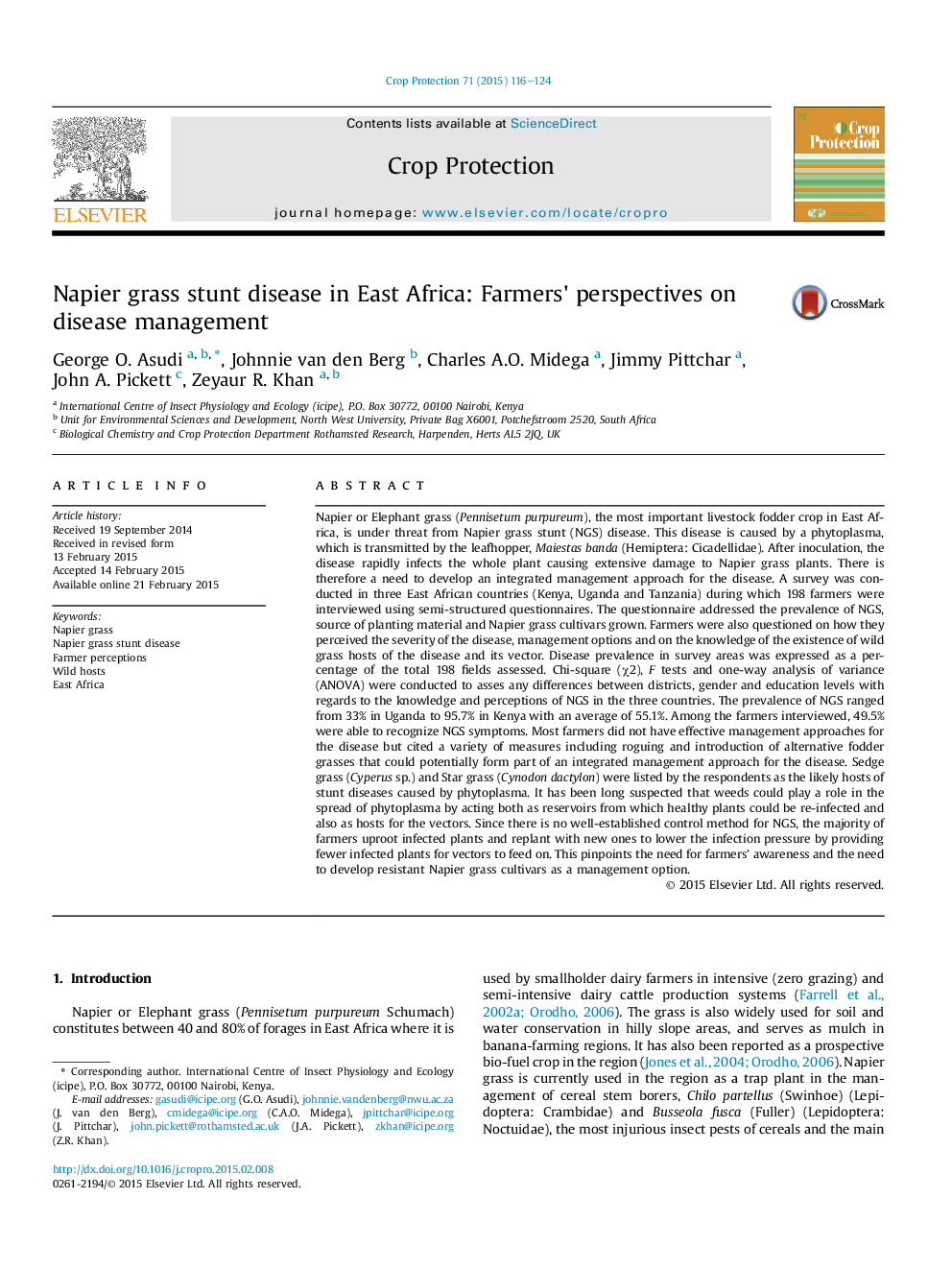| کد مقاله | کد نشریه | سال انتشار | مقاله انگلیسی | نسخه تمام متن |
|---|---|---|---|---|
| 4505721 | 1624316 | 2015 | 9 صفحه PDF | دانلود رایگان |
• A survey conducted in East Africa found the prevalence of Napier grass stunt (NGS) disease to be highest in Kenya.
• Among farmers who participated in the survey, 49.5% recognized NGS symptoms.
• Most farmers did not have an effective management strategy for NGS.
• Roguing and introduction of alternative fodder grasses were mentioned as potential components of an integrated management strategy for NGS.
• Most farmers did not know the wild grasses that are hosts to NGS.
Napier or Elephant grass (Pennisetum purpureum), the most important livestock fodder crop in East Africa, is under threat from Napier grass stunt (NGS) disease. This disease is caused by a phytoplasma, which is transmitted by the leafhopper, Maiestas banda (Hemiptera: Cicadellidae). After inoculation, the disease rapidly infects the whole plant causing extensive damage to Napier grass plants. There is therefore a need to develop an integrated management approach for the disease. A survey was conducted in three East African countries (Kenya, Uganda and Tanzania) during which 198 farmers were interviewed using semi-structured questionnaires. The questionnaire addressed the prevalence of NGS, source of planting material and Napier grass cultivars grown. Farmers were also questioned on how they perceived the severity of the disease, management options and on the knowledge of the existence of wild grass hosts of the disease and its vector. Disease prevalence in survey areas was expressed as a percentage of the total 198 fields assessed. Chi-square (χ2), F tests and one-way analysis of variance (ANOVA) were conducted to asses any differences between districts, gender and education levels with regards to the knowledge and perceptions of NGS in the three countries. The prevalence of NGS ranged from 33% in Uganda to 95.7% in Kenya with an average of 55.1%. Among the farmers interviewed, 49.5% were able to recognize NGS symptoms. Most farmers did not have effective management approaches for the disease but cited a variety of measures including roguing and introduction of alternative fodder grasses that could potentially form part of an integrated management approach for the disease. Sedge grass (Cyperus sp.) and Star grass (Cynodon dactylon) were listed by the respondents as the likely hosts of stunt diseases caused by phytoplasma. It has been long suspected that weeds could play a role in the spread of phytoplasma by acting both as reservoirs from which healthy plants could be re-infected and also as hosts for the vectors. Since there is no well-established control method for NGS, the majority of farmers uproot infected plants and replant with new ones to lower the infection pressure by providing fewer infected plants for vectors to feed on. This pinpoints the need for farmers' awareness and the need to develop resistant Napier grass cultivars as a management option.
Journal: Crop Protection - Volume 71, May 2015, Pages 116–124
